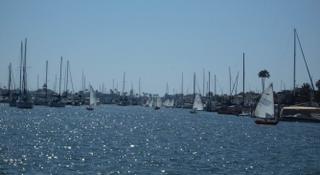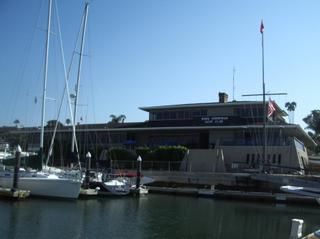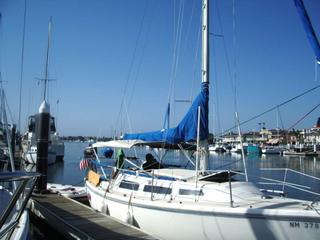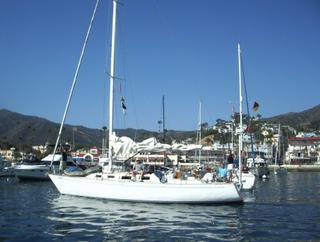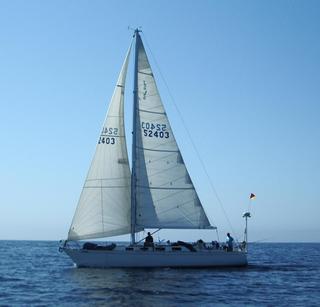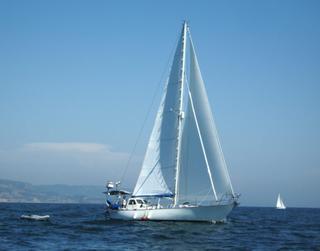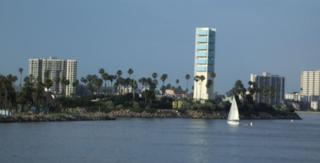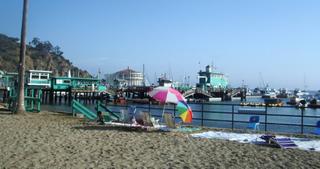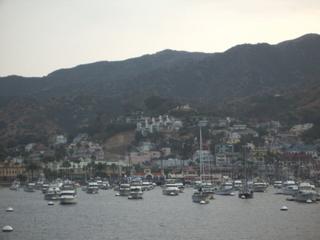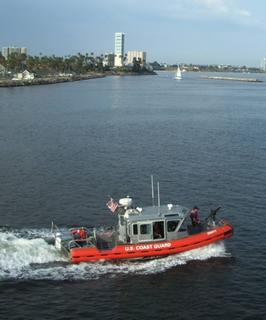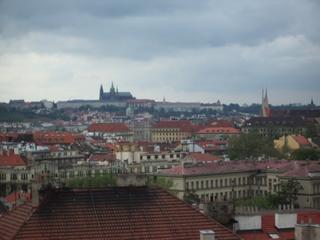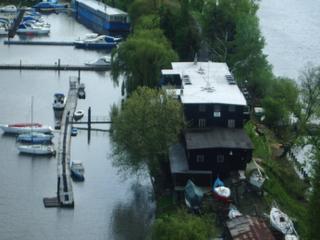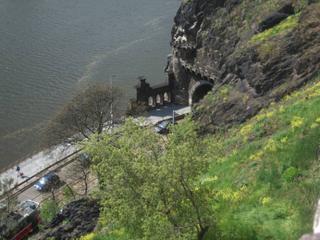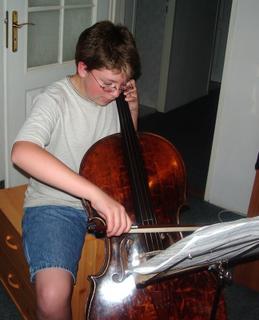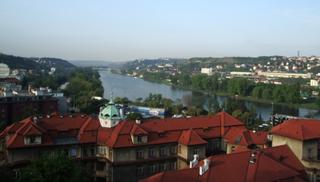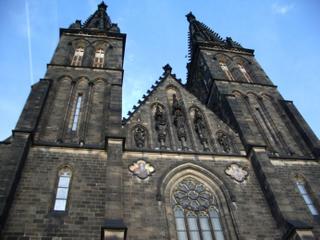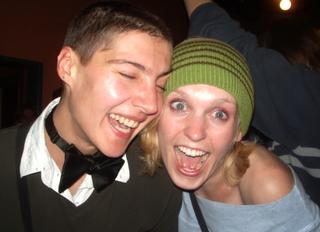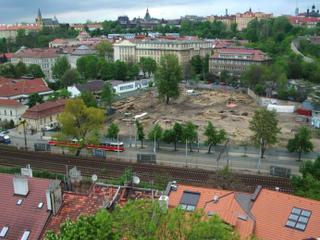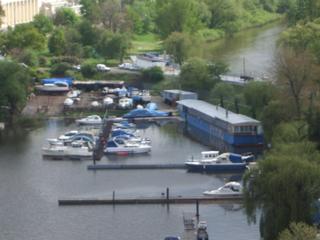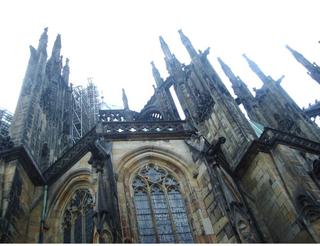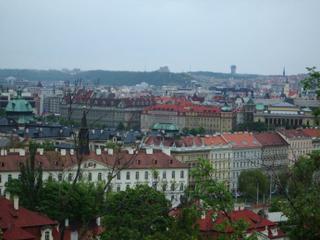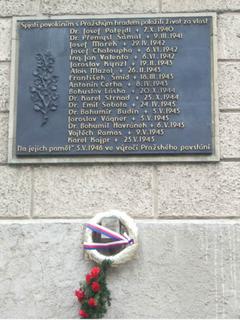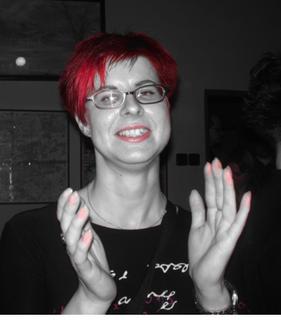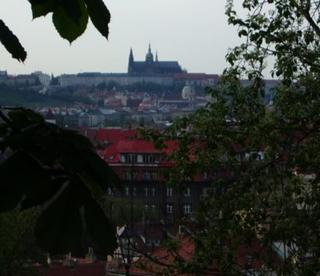sail - plachetní loď, plachta (lodní)
sail - dát se (rozhodně, slang.) embark
sail - plachetnice (plachetní loď)
sail - pustit se (dát se, slang.) plunge, embark
sail - řídit (loď) (navigate)
sail - spustit (lodičku) go off, unloose, drop anchor, launch
sail - plavit se
sail – plout
plout (s vlecenou kotvou) - kedge
plout (o lodi) - be bound
plout - bear down on, bowl along, steer, go, scud, float
plout (z mista na misto) - cruise
plout blizko pobrezi - hug the coast
plout clunem - boat
sail – plavba (navigation, crossing, passage)
plavba kolem sveta - circumnavigation
plavba po kanalech - canal navigation
plavba po mori - sea voyage
sail – plachtoví (canvas, rigging, sail, clothing, tarp)
sail - jet po vodě go by water
sail - křídlo (mlýna) (flank, wing)
sail - lodní plachta
lodni poddustojnik (namor.) - midshipman
lodni ponor - sea-gauge (sink)
lodni potreby - naval stores
lodni prid - prow
lodni propust - ship pass
lodni prostor (namor.) – hold, -space, stowage, gross tonnage
lodni prostor (tonaz) - tonnage
sail – odplout- come around (US), set sail
sail - plachtit se
sail (pl) - plavidlo
sailor – námořník, plavec, lodník
sailor hat - slamák
Sailor Takes a Wife - námořník se žení
sailors - námořnický
sailoring - námořničení
sailorman - námořník
midshipman - lodni praktikant -
naval architect - lodni projektant -
sailboat(s), sailing boat - plachetnice
sailer – plachetnice, plachetní loď (sailing vessel)
sailer - loď
clipper - plachetnice (rychla, drive) -
sailed - plavil se, pod plachtami
sailing – plachtění, plachetní
sailing - plavba
sailing - umění řídit loď (craft of sea navigation)
sailing - navigace
sailing – mořeplavba (sea voyaging)
sailing - plavební podmínky
sailing - plavební předpisy
sailing date, sailing day - den odplutí
sails - plachty
sail – peruť (wing, sail)
sail – plachtit (wing)
sails – plachty, plavba, plavidlo
sailcloth - látka na plachty
mainsail - hlavní plachta
spinnaker - spinakr (námoř.)
jib - kosatka (plachta) (foresail, jib)
Genoa – janov
mizzen - vratiplachta
plavit se – circumnavigate, navigate
plavit se (krizem krazem - cruise
plavit se – sail, - be under sail, punt
plavit se (dlouho nebo okruzni plav - voyage
plavit se (lodi) - ship
plavit se do - sail for
tack about - křižovat (s lodí, v chování)
tack about - lavírovat (křižovat s lodí,v chován
starboard - pravobok (lodi), pravý bok (lodi), pravý
starboard side - pravý bok (lodi)
right ..........vpravo
from the right - zprava
left vlevo
port side, port - levý bok lodi, levý bok (lodi)
prid – nose, bow, fore, foreship, prow
prid (lodi) – stem, bows (pl)
prid clunu - bow of a boat
forward – doslat forward
forward - dopředu (směřující) before, forth, ahead
forward - kupředu (směrující) ahead, onward
forward - směřující vpřed forward
forward - v popředí to the fore
forward - vpřed (směřující), přední
forward - v propustném směru
aft - na zádi, na záď
aft - u zádi
aft - k zádi
aft - u
stern - lodní záď, záď (lodní)
zad (stern, poop, afterbody)
stern – kormidlo (rudder, helm, tiller, stern)
stern - zadní část (heel, stern, tail)
zadni delo - stern-chaser
rudder – kormidlo, kormidlovat
rudder - směrovka
rudder - směrnice
rudder - zásada
rudderhead - hlava pně kormidla
rudderless - bez kormidla
rudderpost - peň kormidla
tiller - řídicí páka tiller, joystick, track arm
tiller - páka kormidla (námoř.), kormidelní páka
tiller rope - kormidelní lano
yokelines - kormidlova lana
kormidelni retez - tiller-chain
kormidlovani – steerage, steering
kormidlovat - handle the rudder, helm, steer, steer the steering wheel, con, cox
kormidlovat zavodni lod - coxswain
kormidlovani (pren.) - helm
řídicí steering, driving, directional
transom - příčný tram (transom, crossbeam)
transom – traverza (girder, spreader bar, transverse beam)
transom – nosník (console, stanchion)
transom – rozpěra (spreader, reacher, stay bar)
transom - vodorovná příčel, vodorovný příčel
vodorovna - horizontal
keel - lodní kýl, kýl (lodní)
keel - loď (bás.)
keel – obrátit (put about) kýlem (bottom) vzhůru (upward)
keel - padnout
keel – položit lay down, depose
keel-haul - ostře pokárat keel-haul, reprimand
keel-haul - dát co proto dress-down, flay
keel-haul - vzít na paškál, - sjet (koho)
kylova chodba - double bottom
kylova lopatice - centreboard
mainmast - hlavní stěžeň (námoř.), hlavní stožár
foremast - přední stěžeň (námoř.)
mizzen - plachta na zadním stožáru (námoř.)
mizzen mast - zadní stěžeň
mast – stěžeň mast
mast – stožár pole, mast, flagstaff
mast antenna - stožárová anténa
mast signal - stožárové návěstidlo
burgee - plamenec (námoř.) (pennant, flue)
boom – trám (boom, girder, strut, beam)
boom – bidlo (pole, shaft, spar)
boom - jít nahoru come aloft?
plachetni rozpera (zapora, namor.) - sprit
plachetni zapora - sprit
halyard - provaz na zvedání a spouštění (námo) (halyard, haulyard, halliard)
halyard - zdvíhací lano (zdvihadlo - hoisting gear)
halyard – zdviž (elevator, hoist, halyard)
mainsheet - hlavní otěž (main check-rein/bridle)
foresheet - otez predni plachty
forestay - přední stěh, čelní podpěra stěžně
shroud - stěžňové lano (výztužné, námor.)
boom guy - řídicí lano
topping lift fall - výložné lano
topping lift purchase - výložná kladka
cringle - vodící oko (námoř.) (~loop guide)
cringle - vodící kroužek (námoř.) (~ring guide)
reef point - kasací lanko
lanko guy, wire, string
lanko na zebriku - ratline
block - blok
companion hatch, hatchway companion - vstupni pristresek
compass – kompas
compass bearing - magneticky kurz
compass bowl - pouzdro kompasu
compass compensation - kompenzace kompasu
compass heading - kurz daný kompasem
compass needle - magnetka
compass north - magnetický sever
sextant sextant (uhlomer) – (sextant, protractor, angle gauge)
chart - mapa námořní
dividers (pl) - odpichovací kružítko
casomer – chronometer, time meter
casomeric - chronometer
south latitude - jižní zeměpisná šířka
longitude - délka (zejména zeměp.)
longitude - zeměpisná délka
longitude - dlouhý celočíselný typ
port – přístavní (port, harbor); pristavni doky – docks pristavni hraz – jetty or mole, pristavni kapitan - harbour-master)
port (SCO) - brána (městská) (pylon, port, portal)
port - okénko (v boku lodi) (window, wicket)
port – útočiště (haven, port, refuge, shelter, sanctuary)
port - otvor (v boku lodi) (inlet, hatch, loophole, slot)
port - přístav
port – dvířka hatch, port, little door
lodi, lodika - boats
lodivodska lod - pilot vessel; lodivodsky clun - pilot boat
lodivodska vlajka - pilot flag; lodivodsky zebrik - pilot ladder
lodka - dinghy
lod bitevni - battleship
lod cisternova - tanker
lod dalne plavby - foreign-going vessel
lod drzena v pristavu bouri - storm-bound ship
longship - válečná veslice (war oared boat)
Jachta, jachtarsky - yacht
jachta k plachteni na lede - ice-boat
jachtar - yachtsman; jachtarske - yachtsmen
jachtarsky klub - yacht club
jachtareni, jachting, jachtink - yachting
sailing club - plachetní klub
regatta - regata (veslařský závod), veslařské závody (rowing competition)
sailorly - elegantní
shipshape (hov.) - v poradku (pren.)
breeze - potyčka (hovor.) (passage, skirmish)breeze - ovád
breeze – vánek zephyr, breath
breeze – větřík air
breeze – škvára breeze, dross, clinker
breeze – střeček breeze, gadfly
breeze – vanout sweep, blow, breeze
breeze – foukat whiff, whiffle, fan, breeze
gale - splátka (nájemného, úroků)
gale - vichřice (námoř., 51 - 101 km/hod) storm, tempest, tornado, waterspout
gale - voskovník (bot.)
gale - bouře (veselí ap.) tempest, thunderstorm
gale - výbuch (smíchu ap.) outburst, gust, eruption
gale – poprask turmoil, uproar, disturbance
gale - vánek (vítr, bás.)
gale disaster - větrná kalamita wind calamity
gale-disaster area - kalamitní plocha
hurricane – uragán, vichřice, hurikán, vichřice, orkán, cyklon
north - severní
northeast – severovýchod, severovýchodní
northeast of - severovýchodně od
east by north - severovýchodně
east východní (v zeměpisných jménech)
east - na východ, Východ, východně
east by south - jihovýchodně
southeast - jihovýchodní
southeaster - jihovýchodní vítr
south – jih, jižní, jižně, k jihu, na jih, na jihu
west by south - jihozápadně
southwest – jihozápadní, na jihozápad, k jihozápadu
southwester - jihozápadní vítr (bouře ap.)
southwester - rybářský klobouk (nepromokavý)
west – západ, západní
west by north - severozápadně
northwest – severozápad, severozápadní
Adriatic – Jadran, jaderský, adriatický
Adriatic Sea - Jaderské moře
Atlantic Ocean - Atlantský oceán
Pacific Ocean - Tichý oceán
sea - moře
ocean - oceán
lake - jezero
lake - rybník (velký) pond (robust/expansive)
Gulf Stream - Golfský proud
river – řeka (river, stream, flume), proud (current) (řeky), tok
stream - tok (vodni)
river channel - řečiště
river crossing - přechod řeky
river dam – přehrada (dam, barrier, bulkhead)
the river pours itself into the sea - reka se vleva do more
navigable river – reka splavny
seagull – racek
mořský salt, marine, oceanic
namorni – salt, sea, seagoing, marine, maritime, nautical, naval, navy
plujici ostre proti vetru, plujici tesne u vetru - full and by
propustny - leaky
lavka – bridge, foot bridge, gangway
zachranna kotva – anchor (safety anchor)
zachranna letka - air rescue squadron
zachranna lod - life-craft
zachranna lod - salvage ship/vessel, wrecker
zachranna stanice - first-aid station, ambulance
zachranna vesta (plovaci) - cork jacket
anchor – kotevní anchor anchorage, guy
anchor – kotva anchor, deadman
kotva (viceramenna) - grapnel
anchor – zakotvit moor, cast anchor, drop anchor
anchor – kotvit to anchor, lie at anchor
anchor - ukotvit
anchor cable - kotevní lano
anchor capstan - kotevní vratidlo
anchor chain - kotevní řetěz
vratidlo – crab, capstan, windlass, star wheel; tackle
oar – veslo sweep, oar, row
oar boat - veslový člun
oarage – veslování
veslovani - vpred! - give way-all!
veslovat - pull together; veslovat! - down oars!
oared - veslový
oarless - bez vesel
oars (pl) – vesla, veslař
buoy – bóje, vzpružit, poplavek
buoy - označit bójí buoy out, buoy
buoy - záchranný pás life preserver, seat belt
buoy – nadnášet uphold, float
buoy – plovák cork, float
buoy - udržovat nad vodou (maintain over water)
buoyage - znakování (plavební) dráhy (beacons)
buoyage - bóje (hromad.)
buoyage - plavatky (hromad.)
buoyancy bujnost
lighthouse - maják
lighthouse keeper - strážce majáku
commodore - komodor (námoř., voj.)
commodore - starší kapitán (senior capitan)
commodore - předseda jachetního klubu (yacht club chief)
commodore - velitelská loď
vice commodore vice komodor (?)
capsize – převrhnout, převrhnout se unhorse, overthrow
capsize - převrátit se cant over, topple, upset
capsize - překotit se keel over, topple
capsize – zvrhnout, zvrhnout se throw back, dwindle
adrift - vydaný na pospas (živlům, osudu, ná
adrift – zmítaný, plující
adrift – nazdařbůh adrift, aimless, random
adrift - unášený proudem adrift, carried away
adrift – neuvázaný adrift, ill-advised, impetuous
adrift – nezakotvený adrift, under weigh
adrift - bez cíle adrift, aimless
figurehead – loutka doll, dummy, straw man
figurehead - galionová figura
galionova ozdoba - fiddle-head
outboard motor - přívěsný lodní motor
přívěsný outboard, appended, tie-on,
motorova lod - cruiser
motor petrol - motorový benzín
gasoline - benzín (USA)
oil - nafta (GB), petrolej (GB)
oil - olej
diesel - dieselový
diesel, diesel oil - motorová nafta
diesel - naftový
diesel fuel - nafta pro motory
Diesel engine - motor dieselový, naftový motor
mooring – kotviště (plural), kotvení
mooring - zakotvení
mooring - uvázání
mooring bitt - vyvazovací pachole
mooring rope - uvazovací lano
mooring-mast - kotevní stožár
moorings - zakotvení
splice - nastavit (provaz, desku) (splice together, adjust, regulate)
splice - spojovat (spletením ap.) (bond, join,knit)
splice - spojit splétáním
splice – spojit (yoke,hyphenate, unite)
splice - splétat
splice – přilepit (glue, attach, paste)
splice – nalepit (stick on, glue, attach, paste)
splice - spojení
splice - podélná vazba
splice - podélný spoj
splice – propojovat (wire up, splice, connect, tie in)
splice - sesazovat (dýhy)
splice - sešívat (papír)
splice - slepit pásku (splice, tape or bind together)
spletany spoj - spliced joint
spletat – twist, braid, knit, pleat, splice
spletat (cop) - plait
spletat se - twine
sesazovacka - splicer
sesazovani - splicing
blinking - mžouravý
flashing beacon - mžikový maják
hromovy hlas – foghorn (thunder voice)
foghorn - mlhová siréna (fog siren)
foghorn - mlhový roh (fog horn/edge)
foghorn - hlas jako hrom (voice like thunder)
foghorn - hromový hlas (thundering voice)
zmitany bouri - storm-beaten, tempest-tossed
cloud - zachmuřit (přen.)
cloud - zatemnit (přen.)
cloud - mrak
cloud - zahalit
cloud - mračno
cloud - chmura
cloud - zastřít
cloud - oblak
cloud - kouř
cloud - opocení
cloud - vrhnout stín
cloud - zachmuřit
cloud - zakrýt mrakem
cloud - zamlžit
cloud - zastínit
cloud - zákal (tekutiny)
cloud - zkalit
cloud height - výška mraků
cloud in - obestřít
cloud layer - vrstva mraků
cloud-burst - průtrž mračen
cloudbank - hradba (nízkých) mraků
cumulus - kumulus (meteor.)
cumulus - kupovitý oblak
cumulonimbus - kumulonimbus (meteor.)
cumulostratus - kumulostratus (meteor.)
cirrus - úponek
cirrus cloud - beránkový mrak
nimbus – svatozář (aureole, halo)
nimbus - nimbus
nimbus - dešťový oblak
nimbus - nimbostratus
thundercloud - zamračený
thunderer - hromovládce
thundering – hromový (thunder, thundering)
thundering - hřímání
thundering - ohromný
thundering - senzační
thundering - hřímavý
thunderstorm - bouřka
thunderstorm - hromobití
thunderstorm - bouře
lightning - blesk
lightning - blýskat se
lightning conductor – bleskosvod (lightning rod)
lightning storm - bouře
lightning strike - neohlášená stávka
lightning strikes - hrom bije
rain - déšť
rain - pršet
rain - řinout se
rain - téct
rain - padat
rain - dešťový
rain cats and dogs - lít jako z konve
lit (tez silne prset) - pour
lit (silne prset) - shower
destovy – pluvial, pluvious, rain, rainy
rain gauge - dešťoměr
rain glass - barometr
rain squall - poryv deště
rain storm - bouře doprovázená lijákem
tornado - smršť (též i přen.)
tornado - vichřice
tornado - tornádo (smršť)
tornado - smršť (též přen.)
tornado - orkán (bouře, přen.)
tornado - bouře (přen.)
tornado - větrná smršť
sleet - pršet s kroupami (být plískanice)
sleet - pršet se sněhem (být plískanice)
sleet - plískanice
sleet - zmrzlý déšť
sleet - déšť se sněhem
sleet - sníh s deštěm
sleet - sněhová kaše
snow - sníh (též i přen.)
snow - sníh (též přen.)
snow - sněžit
snow - sněžení
snow - sněhový
snow - sněžný
snow - padat sníh
snow - chumelit
snow - zima
snow - chumelenice
snow - koks
snow - zbělet
snow - zbělet jako sníh
blizzard - vánice
blizzard - blizard
blizzard - fukýř
blizzard - sněhová bouře
blizzard - metelice
blizzard - sněhová vichřice
Non-Beaufort winds etc.:
vánek = bríza - breeze
húlava - squall
smršť - (inf.) squall; whirlwind
uragán - hurricane (Caribbean)
hurikán - hurricane (N. Atlantic)
bouře - storm
bouřka - thunderstorm
bouře tropická - tropical storm
bouře sněhová - snowstorm
The Beaufort Scale:
0 - bezvětří calm
1 - vánek light air
2 - slabý vítr light breeze
3 - mírný vítr gentle breeze
4 - dosti čerstvý vítr moderate breeze
5 - čerstvý vítr fresh breeze
6 -
7 - prudký vítr near gale
8 - bouřlivý vítr (fresh) gale (gale force 8)
9 - vichřice strong gale (gale force 9)
10 - silná vichřice storm (storm force 10)
11 - mohutná vichřice violent storm (force 11)
12 - orkán hurricane
anchor - záchranná kotva (safety anchor)
anchor – spása (boon, redemption, saving)
anchor – upínat (bind, set)
boom – vzestup (increase, jump, ascent)
boom - vzestup (též i cen)
boom - vzestupná část hospodářského cyklu ($)
boom – reklama (boost, advertising)
boom – úspěch (pass, hit, speed)
boom – hučet (hum, drone, roar)
boom – rozmach (upswing, sway)
boom – vzkvétat (thrive, prosper)
boom - rozvíjet se (thrive, advance)
boom – hukot (whistle, roar, buzz)
boom – konjunktura (boost, conjecture, upswing)
boom - konjunkturní
boom - dělat kampaň (good crusade/offensive)
boom - dělat reklamu
boom – dunění (crash, bellow, rumble)
boom – dunět (roar, plonk, thud)
boom – houkat (toot, whoop, hoot)
mast – bukvice (forage, nuts)
mast – žaludy (acorns)
mast - krmivo (z bukvic, žaludů) (browse)
mast - opatřit stěžněm
mast - úroda bukvic (crop)
bow - uvést (s poklonami)
bow – úklona (to duck or to bow)
bow – luk (archery)
bow – sklonit (bend, crouch, decline)
bow - motýlek (kravata) (bow tie)
bow - ohnout se (hunch, buckle)
bow – ohýbat (turn back, curve)
bow - duha (bás.)
duha (sudu) - stave
bow - klonit se (descend, stoop)
bow – mašle (ribbon, topknot)
bow – oblouk (arch, arc)
bow – ohnout (hook, flex, fold down)
bow – ohyb (bend, crease)
bow - ohýbat se (hang over, bend before, diffract)
bow - smeknout (na pozdrav, jen o mužích) (whip off, pull off, doff)
bow – smyčka (hook, ear, crinkle)
bow – smyk (slip, skid, chute)
stern - zadek (zadní část, též i hovor.) (butt, bum)
stern – krutý (unkind)
stern – vážný (grave, heavy, profound)
stern – strohý (austere, astringent)
stern – striktní (hard, stern, strict)
stern – přísný (severe, exacting)
stern - ocas (liščí) (tail of fox)
forte - silná stránka (koho) strong point, strong suit
forte – přednost forte, distinction, virtue, advantage
forte - přednost koho distinction, preeminence, mastery
lake - mořidlové barvivo (dye drench?)
lake - karmínová barva (crimson color?)
transom – příčka (septum)
transom window - dveřní světlík (fanlight, transom window)
forward – arogantní cocky, smug
forward – čilý lively, jaunty
forward – podporovat (foment, support)
forward – poslat (pass along, transmit)
forward – urychlit (set forward, hasten, speed up)
forward – vpředu (afore, ahead, before, in front)
forward – dopravit (transport, ferry, fetch)
forward – doručit (carry, hand over)
forward – drzý (cheeky, bold)
forward – horlivý (keen, industrious, spirited)
forward – odeslat (send away, dispatch)
forward - posunout dopředu (4. p.) (move, shift forward [mail])
forward - útočník (v kopané) strike forward
forward – předat transfer, commit, hand over
forward – pokrokový progressive, up-to-date
forward – časný precocious, early
forward – napomáhat abet, aid
forward – neostýchavý pert, unabashed
forward – perspektivní advanced, perspective
forward – pokročilý advanced
forward – progresivní progressive
forward – předsunutý foremost
forward – přepravit transfer, airlift
forward – připravený fit, prepared, disposed
forward – radikální sweeping, extreme, radical
forward – raný early, early ripening
forward - strkat se elbow, hustle
forward – vyspělý mature, state of the art
forward – zaslat despatch
port - brána (městská, skotsky) (portal, pylon)
port - vínová červeň (wine)
port - držení těla deportment
port – dveře entrance, gate
port - levá strana left side
port - postoj (držení těla) (stance, bearing)
port - vstupní otvor (orifice, discharge port)
tiller – rolník farmer
tiller – odnož offshoot
tiller - výhonek (odnož) sprig, sprout, sprit
tiller – kypřič aerator, cultivator
tiller – pokrývač roofer, tiler
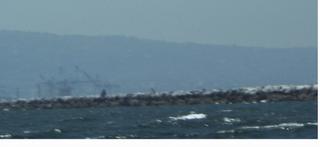
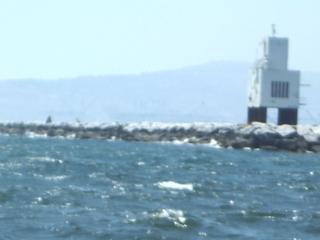 With spray and sometimes more water coming aboard, we took advantage of an opportunity to tack into the Long Beach harbor entrance and work our way up through the outer harbor toward San Pedro. The advantage of this maneuver was the relatively calmer waters inside the breakwater; even though we still had whitecaps and some breaking waves, the swell was gone and the ride much easier. The disadvantage was that the waters were more crowded with jetties, moored ships, and moving vessels to be avoided, so we had to do much more tacking. Also, toward the end of our beat, the winds became more fickle, softening enough to tempt us to run out more genoa, and then renewing their fury and forcing us to reduce sail again.
With spray and sometimes more water coming aboard, we took advantage of an opportunity to tack into the Long Beach harbor entrance and work our way up through the outer harbor toward San Pedro. The advantage of this maneuver was the relatively calmer waters inside the breakwater; even though we still had whitecaps and some breaking waves, the swell was gone and the ride much easier. The disadvantage was that the waters were more crowded with jetties, moored ships, and moving vessels to be avoided, so we had to do much more tacking. Also, toward the end of our beat, the winds became more fickle, softening enough to tempt us to run out more genoa, and then renewing their fury and forcing us to reduce sail again. The next day, we enjoyed the peaceful morning quiet of the harbor. The morning soon became warm, but we had a lot to do. Captain Al climbed the mast, using a special ladder that was hauled up the mainsail track, to retrieve an errant halyard. Much work had to be done to prepare Hägar for haul-out; lines and sheets needed to be coiled and stowed, the sails put down, the boom stowed below, and the dinghy taken apart, washed, and stowed. Then it was time to say farewell to our friends at Cabrillo Beach, motor to the boat ramp, and begin the haul-out process.
The next day, we enjoyed the peaceful morning quiet of the harbor. The morning soon became warm, but we had a lot to do. Captain Al climbed the mast, using a special ladder that was hauled up the mainsail track, to retrieve an errant halyard. Much work had to be done to prepare Hägar for haul-out; lines and sheets needed to be coiled and stowed, the sails put down, the boom stowed below, and the dinghy taken apart, washed, and stowed. Then it was time to say farewell to our friends at Cabrillo Beach, motor to the boat ramp, and begin the haul-out process.